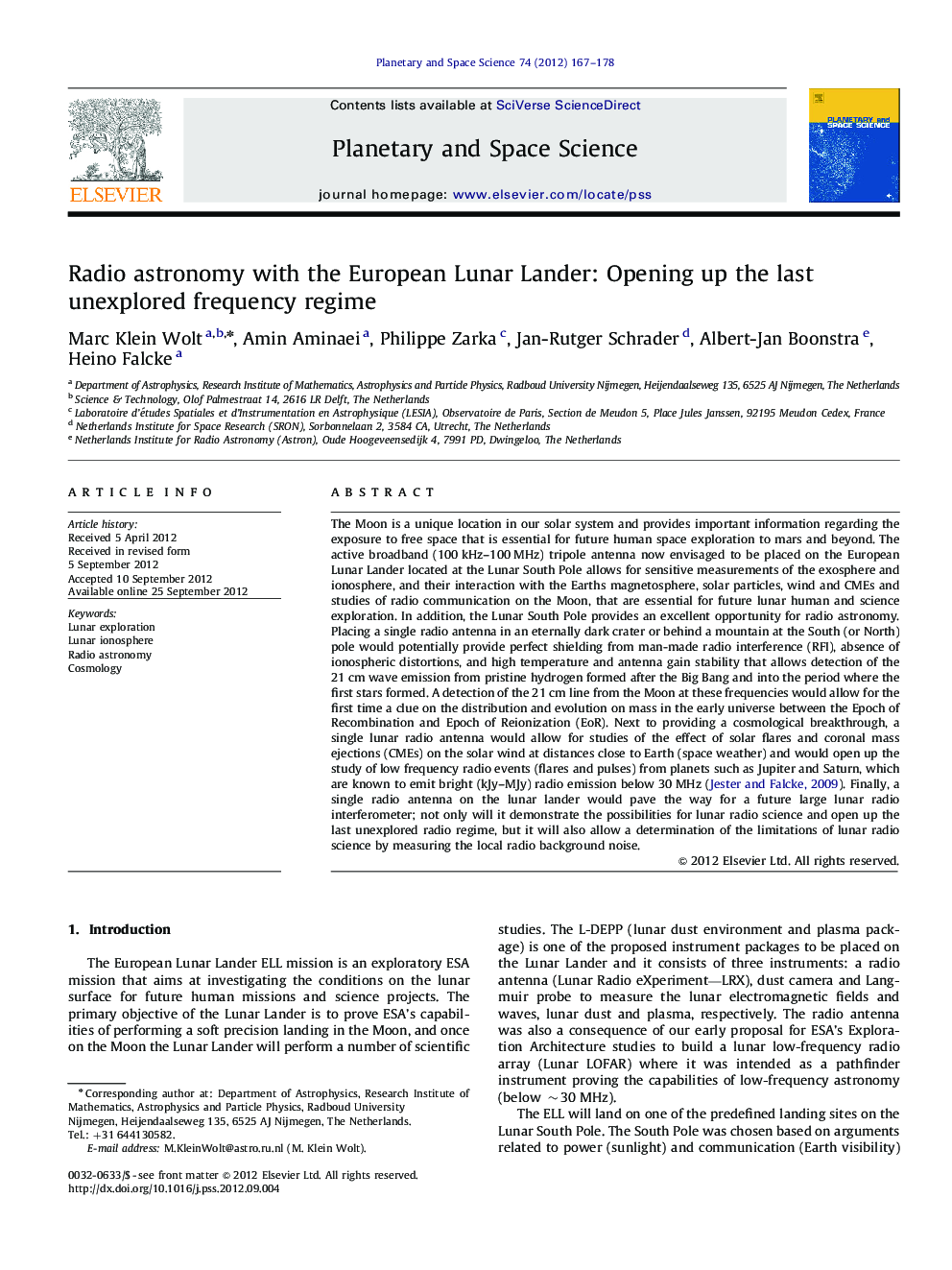| کد مقاله | کد نشریه | سال انتشار | مقاله انگلیسی | نسخه تمام متن |
|---|---|---|---|---|
| 1781395 | 1022276 | 2012 | 12 صفحه PDF | دانلود رایگان |

The Moon is a unique location in our solar system and provides important information regarding the exposure to free space that is essential for future human space exploration to mars and beyond. The active broadband (100 kHz–100 MHz) tripole antenna now envisaged to be placed on the European Lunar Lander located at the Lunar South Pole allows for sensitive measurements of the exosphere and ionosphere, and their interaction with the Earths magnetosphere, solar particles, wind and CMEs and studies of radio communication on the Moon, that are essential for future lunar human and science exploration. In addition, the Lunar South Pole provides an excellent opportunity for radio astronomy. Placing a single radio antenna in an eternally dark crater or behind a mountain at the South (or North) pole would potentially provide perfect shielding from man-made radio interference (RFI), absence of ionospheric distortions, and high temperature and antenna gain stability that allows detection of the 21 cm wave emission from pristine hydrogen formed after the Big Bang and into the period where the first stars formed. A detection of the 21 cm line from the Moon at these frequencies would allow for the first time a clue on the distribution and evolution on mass in the early universe between the Epoch of Recombination and Epoch of Reionization (EoR). Next to providing a cosmological breakthrough, a single lunar radio antenna would allow for studies of the effect of solar flares and coronal mass ejections (CMEs) on the solar wind at distances close to Earth (space weather) and would open up the study of low frequency radio events (flares and pulses) from planets such as Jupiter and Saturn, which are known to emit bright (kJy–MJy) radio emission below 30 MHz (Jester and Falcke, 2009). Finally, a single radio antenna on the lunar lander would pave the way for a future large lunar radio interferometer; not only will it demonstrate the possibilities for lunar radio science and open up the last unexplored radio regime, but it will also allow a determination of the limitations of lunar radio science by measuring the local radio background noise.
► The Lunar Radio eXplorer (LRX) tripole active antenna will be placed on the European Lunar Lander.
► The LRX will map in detail the lunar radio background and lunar ionosphere.
► The LRX will allow for a first detection of the signal from the Dark Ages.
► In addition the LRX will address solar and planetary science.
► The LRX is a pathfinder mission for a future lunar radio array.
Journal: Planetary and Space Science - Volume 74, Issue 1, December 2012, Pages 167–178